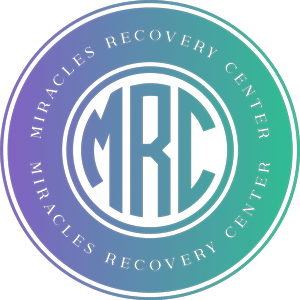Choosing the right recovery facility is crucial for ensuring a successful and lasting recovery journey. With so many options available, it can be overwhelming to know where to start. This guide will walk you through the essential steps to find the best recovery facility suited to your needs, using simple and engaging language to help you make an informed decision.
1. Understanding Your Recovery Goals
Before you can choose the right facility, it’s essential to identify what you hope to achieve in recovery. Whether it’s maintaining sobriety, improving mental health, or developing new life skills, knowing your goals will guide your decision-making process. Each person’s recovery journey is unique, and understanding your personal objectives can help narrow down which facilities will best accommodate your specific needs. It’s also important to continuously revisit these goals throughout the recovery process, as they can evolve over time.
Setting clear, achievable goals can serve as a roadmap in recovery. These goals might include short-term objectives, such as developing coping mechanisms for cravings, or long-term aspirations like rebuilding personal relationships. Having a clear vision of what you want to accomplish will not only keep you motivated but also help in aligning your expectations with the services offered by various recovery facilities.
2. Researching Different Types of Recovery Facilities
Not all recovery facilities are created equal. Some focus on medical detox, while others offer long-term residential programs or outpatient services. Understanding the differences can help you narrow down your choices. For example, residential programs are often best for individuals seeking a structured environment away from their usual habits, while outpatient programs offer flexibility for those who need to maintain daily responsibilities. By researching these options, you can align the facility’s focus with your recovery needs.
Additionally, some facilities may specialize in treating specific substance dependencies or co-occurring disorders, which can be a crucial factor for individuals with unique challenges. Explore whether a facility offers support for issues like dual diagnosis or trauma-informed care, which might be essential components of your recovery plan. Understanding these nuances will empower you in making a choice that truly aligns with your circumstances.
3. Evaluating Facility Credentials and Accreditation
Ensure the facility you consider is licensed and accredited by reputable organizations. This ensures they meet specific standards and provide quality care. Accreditation by bodies such as The Joint Commission or the Commission on Accreditation of Rehabilitation Facilities (CARF) indicates adherence to high industry standards. These credentials can provide peace of mind, knowing you’re in a facility committed to excellence and safe practices.
Moreover, checking if the staff holds proper certifications is vital. Professionals with licenses in counseling, psychiatry, or medicine signify a commitment to ongoing education and ethical care practices, enhancing the quality of support you will receive during your recovery journey.
4. Considering Location and Environment
The location and setting of a facility can significantly impact your recovery experience. Decide whether you need a place close to home for family support or a more secluded environment to focus solely on recovery. Proximity to loved ones might offer emotional support, yet some individuals find that healing occurs more effectively away from familiar surroundings that may trigger stress or temptation.
Additionally, consider the climate and natural surroundings of the facility. Many find that being near nature, such as mountains or beaches, enhances therapeutic experiences. The environment should contribute to a serene and focused recovery process.
5. Reviewing Treatment Approaches and Therapies
Different facilities offer various treatment approaches, from traditional therapy to holistic methods. Learn about the different therapies and determine which aligns best with your personal preferences and needs. Some facilities may offer evidence-based therapies like Cognitive Behavioral Therapy (CBT) or Dialectical Behavior Therapy (DBT), while others might incorporate holistic treatments like art therapy, mindfulness, or yoga. A combination of these approaches can cater to diverse needs and preferences, potentially enhancing the recovery experience.
Also, take into account whether the facility offers individualized treatment plans or adopts a one-size-fits-all strategy. Personalized plans that evolve as you progress can be crucial for addressing specific issues and adapting to personal growth throughout the recovery journey.
6. Assessing Staff Qualifications and Experience
The staff at a facility play a crucial role in your recovery process. Look for facilities with experienced and qualified professionals who are compassionate and supportive. Staff qualifications can include licenses in addiction counseling, nursing, or psychology, ensuring a well-rounded team capable of addressing complex recovery needs.
Beyond professional credentials, consider the personal attributes of staff members. Empathy, patience, and the ability to listen actively are just as important as formal training. Reading staff bios or interviewing key personnel can give you a sense of how harmonious your interactions might be in the future.
7. Exploring Aftercare Services
Aftercare is vital for maintaining recovery after leaving a facility. Find out what support services are available to help you transition back to everyday life. These services might include ongoing counseling, support groups, and alumni programs designed to provide continuous encouragement and accountability. Effective aftercare plans should address potential triggers and relapse prevention, empowering you to sustain the progress achieved during treatment.
Evaluate whether the facility’s approach to aftercare aligns with your long-term recovery goals. The smoother the transition from structured treatment to independent living, the better your chances of sustaining long-lasting recovery success.
8. Reading Reviews and Testimonials
Hearing from former patients can provide valuable insights into the facility’s effectiveness and environment. Look for genuine testimonials and reviews online or ask for references. Reading these firsthand experiences can help you understand the day-to-day realities of life within the facility, including the quality of care and the overall atmosphere.
Be mindful to balance both positive and negative reviews, recognizing that every individual’s experience is unique. Engaging in online forums or social media groups can also offer a richer perspective and connect you with individuals willing to share detailed accounts of their recovery journeys.
9. Consulting with a Healthcare Professional
Speaking with doctors or therapists can provide additional guidance. They can recommend facilities based on your specific health needs and their professional network. Healthcare professionals often have firsthand knowledge about various programs and can offer insight into their efficacy and suitability for your situation.
Additionally, they can help assess any medical or psychological needs that might necessitate specialized care during recovery. This professional input can be invaluable in ensuring that all aspects of your well-being are addressed in your chosen facility.
10. Making an Informed Decision
Once you’ve gathered all necessary information, it’s time to make a decision. Trust your instincts and choose the facility that feels right for you, aligning with your recovery goals and personal values. Remember, this is your journey, and the facility you select should feel like a supportive stepping stone towards your health and wellness objectives.
Revisit each aspect you’ve considered—goals, facility type, location, staff, therapies, and aftercare—reflecting on how each element aligns with your personal needs and circumstances. Ultimately, the path to recovery is highly personal, and taking this thoughtful approach ensures your chosen facility becomes a pivotal partner in your journey.





